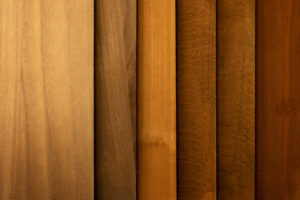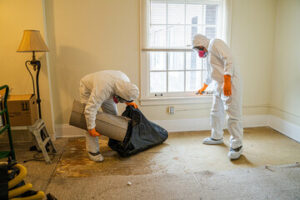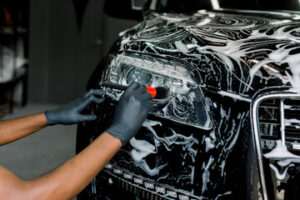Painting contractors provide services to property owners. They may work directly for homeowners or seek out clients through real estate firms, rental agencies and property maintenance companies.

A reputable contractor should be able to provide you with contact information for several happy clients. You can also check online for images of past projects and read client reviews. Visit louspaintingcompany.com/ for more details.
A professional painting contractor should always take the time to understand the customer’s needs and provide them with high-quality work. They should also be willing to answer any questions or concerns that may arise during the job. They should also be willing to work with the customer to find a solution that is mutually beneficial. They should also use quality products and tools.
Choosing the right painting contractor is crucial to ensure a beautiful finish on your home’s interior or exterior. It’s important to read reviews, ask for references, and get estimates from multiple contractors before hiring one. Using the services of a painting contractor will save you money, as well as prevent potential problems with the job.
It’s important to hire a painting contractor with a good track record. You can do this by reading online reviews and looking at social media pages. You should also consider asking friends and family for recommendations. Having a positive experience with a painting company will likely lead to repeat business.
When choosing a painter, look for a company that provides both interior and exterior painting services. JP Interiors is a full-service painting company that offers house and townhome painting, as well as staining, plastering, varnishing, cabinet painting, glazing, and skim coating. The company is a locally owned and operated business that has been in business for 18 years.
If you’re planning a major remodeling project, be sure to hire an experienced contractor. They will be able to handle your large project quickly and efficiently. A reputable contractor will also use proper techniques and equipment, such as power washing the surface before applying primer and paint.
Angie’s List provides leads for contractors, including painters. The website and mobile app allow customers to find service providers in their area, and Angi will display reviews for each company. However, generating new leads takes a lot of effort. Angie’s List charges contractors a fee for each lead, and this can be costly.
Angie’s List is a good option for contractors who need to generate more business. It’s important to remember that a positive review will not only increase your rating, but it can also boost your search engine ranking.
Licensing
Painting contractors must meet licensing requirements on a state-by-state basis. Some states require that painters pass state exams, while others mandate that they register their business or provide financial statements. It’s important to research these rules and regulations before starting a business. Most painter licenses need to be renewed on a regular basis, which can take up time that could be spent growing the business. Harbor Compliance provides a system that automates the process of tracking renewal dates and filing, making it easy for painter contractor companies to remain compliant with the law.
In Arkansas, a painter must be licensed if they take on projects valued at more than $2,000. The licensing process includes passing both a trade and a business and law exam. Applicants must also submit references, proof of insurance and a financial statement. The license is valid for two years.
Many states have specific requirements for residential and commercial painters. For example, a painting contractor must register their company and prove that they have two years of experience in home improvement or a related field. They must also have a financial statement and liability insurance. Those who work with lead paint must complete an approved course before applying for a license.
Some states may also have a minimum education requirement for painting contractors. These courses may include safety training, materials and techniques. Some colleges also offer apprenticeship programs that help students gain hands-on experience in the industry. The requirements for these programs vary by school, but the average apprenticeship takes several years to complete.
Licensing and registration requirements vary by state, so it’s important to check with a local government office or the governing body for your industry. You can also find resources through professional associations and trade publications. Once you’ve researched the requirements, it’s time to find the right insurance policy for your company. BizInsure makes it simple to compare policies from top-tier insurers, so you can choose the coverage that fits your needs.
Insurance
Painting contractors are required to carry a variety of insurance policies, especially general liability and workers’ compensation. While the insurance requirements vary by state, almost all painting businesses must carry these two types of policies. Clients are often skeptical of contractors who do not have these policies, so many ask for proof before hiring them. If a painting contractor cannot provide proof of these policies, the client should find a different painting contractor.
A general liability policy protects the painting business against claims of third-party bodily injury and property damage caused during projects. It also covers legal costs and settlements if an accident occurs. For example, if a client’s toddler trips over a can of paint, the painting contractor could be sued for medical bills and damages. This type of coverage can help protect a painting business from these kinds of incidents.
In addition to general liability, painting contractors can benefit from a commercial auto insurance policy, which provides coverage for vehicles that are owned or leased by the company. This includes trucks and vans used for painting jobs. This type of policy can help the business in the event of an accident or theft, as well as cover lost income if a vehicle is not available for use.
Another important type of insurance is a workers’ compensation policy, which protects the employees of the painting company. Almost all states require this type of insurance for employees, and it can help pay for medical expenses and lost wages in the event of an accident while working on a project.
The other types of insurance that painting contractors can consider include professional liability, tools and equipment coverage, and commercial auto. Each of these policies can be tailored to fit the needs of the business.
Regardless of the size of the painting business, it is essential that all painting contractors have adequate insurance to protect themselves and their clients. There are a variety of insurance companies that offer these policies, and some even offer specific packages for painting contractors. Next Insurance, for instance, offers same-day coverage online and a mobile app, as well as workers’ comp, general liability, and professional liability for one price.
Experience
Painting contractors can work in a variety of environments. They may be contracted for new construction, renovations, additions, or maintenance projects. Their duties can include preparing surfaces, taping minor holes or cracks, priming, sanding, and cleaning surfaces. They can also help with color selection, and choose the right paints for each job. They can use a variety of tools including brushes, rollers, spray guns, and air compressors. They can also provide specialized equipment to access hard-to-reach areas such as ceilings and walls.
One of the most important qualities to look for in a painting contractor is experience. A good contractor should be able to tell you about their experiences and past clients and show you photos or examples of their work. They should also be able to give you an accurate estimate for your project and provide you with an explanation of all the costs involved.
Another important quality is customer service. A good painting contractor will treat customers with respect and courtesy, and will always listen to their concerns and suggestions. They should also be punctual. If they are going to be at your home or business, they should arrive when they say they will and call ahead if they are running late.
It’s also a good idea to get several bids from different painting contractors. Make sure to ask them to itemize the costs of labor and materials so you can compare apples to apples. This will help you avoid any hidden fees. Also, make sure you’re getting a written contract or proposal that outlines what both parties have agreed to.
It’s important to remember that starting a painting company takes time and effort. It’s a good idea to start small and grow your business slowly as you gain the necessary skills and experience. Once you’ve become profitable, you can consider hiring employees to help with your workload and increase the size of your team. You should also make sure to have adequate insurance coverage for your business, as it will protect you against financial loss in the event of an accident.


